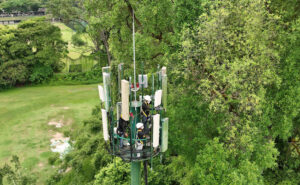Since the budding optimism back in 2020 when South Korea’s operators showed early signs 5G services were driving growth in mobile revenue and ARPU, a more nuanced picture has emerged.
A broad study by Mobile World Live of year-on-year changes in ARPU across eight Asia Pacific markets indicates a very mixed bag: China and Hong Kong flat; South Korea, Australia and Singapore mixed; New Zealand up; Japan and Thailand down.
Matthew Iji, director of modelling and forecasting at GSMA Intelligence, explained the findings aren’t surprising, as most operators are not charging a premium for 5G connectivity. “You will struggle to find a market that has seen a real and sustainable growth in ARPU in line with 5G launches.”
In China, the world’s largest 5G market with more than half of subscribers on 5G plans (though perhaps not all on compatible handsets), all three operators saw ARPU remain stable in the first half of 2022.
In South Korea ARPU at SK Telecom, with the highest 5G penetration (38.7 per cent), was flat in Q2. LG Uplus, with 34 per cent on 5G plans, posted a third consecutive quarterly dip in ARPU in the quarter, falling 4.1 per cent.
Meanwhile, KT with 32 per cent of subscribers using 5G services bucked the downward trend. ARPU rose for the fourth straight quarter, increasing 3.2 per cent.
Australia
Telstra (29 per cent 5G users) booked 2.9 per cent and 17.5 per cent increases in post-paid and prepaid ARPU respectively, driving a 6.4 per cent gain in mobile service revenue in fiscal 2022.
Singtel-owned Optus reported a 1.3 per cent drop in post-paid ARPU, with prepaid flat. Singtel group didn’t reveal 5G subscribers for Q2, but GSMA Intelligence estimated its Australia operation had 23 per cent 5G penetration at end-June.
Japan
NTT Docomo’s ARPU in the April to June period dipped 4 per cent despite its 5G user base doubling year-on-year to 13.8 million. It has 85.2 million total subs.
ARPU at KDDI slipped 7.8 per cent as the percentage of users with 5G plans jumped to 39.5 per cent from 10.4 per cent year earlier. SoftBank Corp’s ARPU was down 6.9 per cent. GSMA Intelligence pegged 5G penetration at 19 per cent.
Hong Kong-based HKT (near 20 per cent) said post-paid ARPU was steady. In Singapore, where Singtel was estimated to have around 10 per cent 5G penetration, post-paid ARPU grew 11.2 per cent and prepaid was down 3.7 per cent.
ARPU at Spark New Zealand, with 12.5 per cent of subs on 5G service (GSMA Intelligence), improved 4 per cent.
Thailand
True Move closed June with 3.4 million 5G subs, representing a tenth of its total user base. The operator said ARPU remained on a downward trend as the industry continued to experience intense competition, with low-tier unlimited data plans offered. Tellingly it didn’t reveal ARPU figures.
AIS’ 5G user base jumped from 1.1 million in Q2 2021 to 3.9 million at end-June, helping drive a 42 per cent increase in average data usage to 28GB a month. 5G users accounted for 8.6 per cent of total subscribers. Post-paid and prepaid ARPU were down 2.3 per cent and 11 per cent.
Of 16 operators assessed, 12 reported flat or falling ARPU; just KT, Telstra and Spark booked increases, while Singtel’s results were mixed.
Remaining relevant
GSMA Intelligence’s Iji noted the hard reality is once a major MNO introduces 5G services, its rivals have to follow to remain relevant. “The same can be true at a market level with governments not wanting to seem left behind,” he added.
The analyst pointed to Bangladesh which, although it didn’t launch LTE until 2018, held a 5G auction in April even though the market wasn’t ready.
On one hand, given the amount of data they have enabled, one could argue operators ‘need’ 5G to just keep up with the demand they’ve created.
On the other, Iji gave the example of India where ARPU is one of the lowest in the world. “It doesn’t seem like an ideal time to launch 5G. In addition, average download speeds of around 15Mb/s do not suggest the market is crying out for faster internet.”
Reliance Jio’s bold $25 billion investment to build a nationwide 5G network in 18 months will no doubt put pressure on its healthy bottom-line for at least the next few years.
It appears certain more countries will take a similar path, regardless of the top-line or bottom-line impact of the new service or the required investment to achieve nationwide coverage.
The editorial views expressed in this article are solely those of the author and will not necessarily reflect the views of the GSMA, its Members or Associate Members.
Subscribe to our daily newsletter
Back
Source of Article



